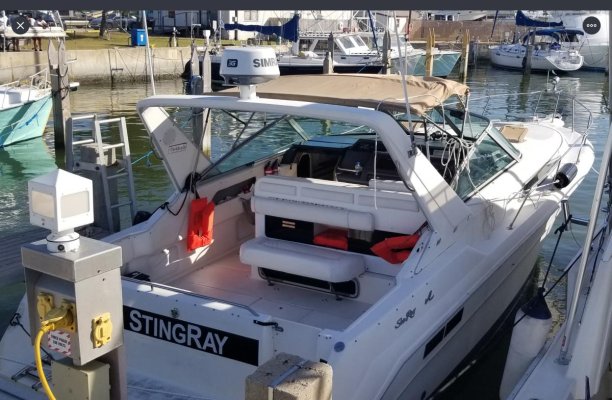Been over this thoroughly on the ClubSeaRay.com site
USCG audio conversation with Bee from vessel after pickup.
https://www.dvidshub.net/audio/64701/missing-mariner-stuart-bee-located-86-miles-east-port-canaveral
https://www.dvidshub.net/search?q=stuart+bee&view=grid
Quoting myself...
"Let's be fair here, when you "go to sea" you need to be prepared because this is a good example of "**** happens". And there are several things he did that certainly could have been done better.
But the boat is clearly a mid 1990 or older Sea Ray, likely a 310DA. They called it a 32 footer, but we know how Sea Ray is with dimensions. A 310 is anywhere from 31' 6" Water Line to 35' 3" Over All with the pulpit and a platform. Look at the helm cabinetry, not molded fiberglass, the arch is aft swept, the engine vents and cabin window style. This is clearly a 25+ year old boat. (but hey so is mine)
The boat is clean, the life jackets are clean, there are two fire extinguishers by the cabin door, the vinyl is not cracked or peeling, there is a Simrad chart plotter and a Simrad 3g radar. This is a well equipped vessel and reasonably cared for. We cant tell about the machinery and it is a saltwater boat.
The CG audio conversation indicates he had a "registered PLB" Bee says "EPIRB" but I would bet on the accuracy of the CG description. A PLB is typically not automated, but manually activated, unlikely to have a hydro-static release bracket. Not quite as good as a marine EPIRB, but he had it. He was reasonably prepared.
Mistakes...
1. alone offshore,
when things go badly extra hands help, could have stood watches while one sleeps. (required by the way)
2. Float Plan?
although he was well known by his marina to be a "day tripper" and they reported him overdue the next morning.
3. Reluctance to call for help EARLY.
This is a common "I can handle it" attitude with any human. If you are having ANY problem offshore you can call the CG and report your position and all vital statistics and set up a communication check schedule. While you attempt to resolve the issue; if you fail to report or reply they have a good starting point to search and calculate set and drift.
At the FIRST sign of "the **** hitting the fan", don't hesitate to use that EPIRB or DSC button, no one is going to get angry about it."

